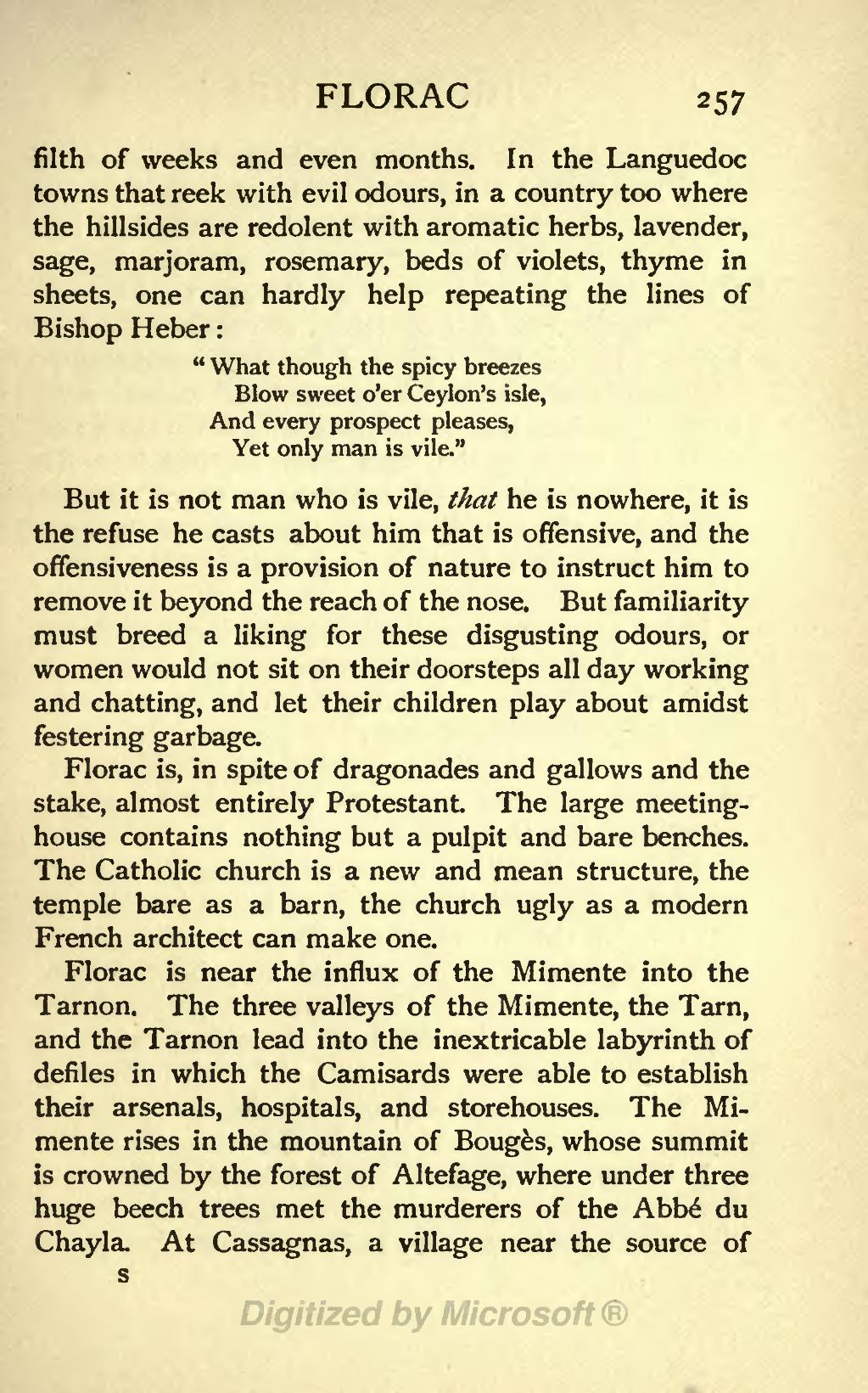filth of weeks and even months. In the Languedoc towns that reek with evil odours, in a country too where the hillsides are redolent with aromatic herbs, lavender, sage, marjoram, rosemary, beds of violets, thyme in sheets, one can hardly help repeating the lines of Bishop Heber:
"What though the spicy breezes
Blow sweet o'er Ceylon's isle,
And every prospect pleases,
Yet only man is vile."
But it is not man who is vile, that he is nowhere, it is the refuse he casts about him that is offensive, and the offensiveness is a provision of nature to instruct him to remove it beyond the reach of the nose. But familiarity must breed a liking for these disgusting odours, or women would not sit on their doorsteps all day working and chatting, and let their children play about amidst festering garbage.
Florac is, in spite of dragonades and gallows and the stake, almost entirely Protestant. The large meetinghouse contains nothing but a pulpit and bare benches. The Catholic church is a new and mean structure, the temple bare as a barn, the church ugly as a modern French architect can make one.
Florac is near the influx of the Mimente into the Tarnon. The three valleys of the Mimente, the Tarn, and the Tarnon lead into the inextricable labyrinth of defiles in which the Camisards were able to establish their arsenals, hospitals, and storehouses. The Mimente rises in the mountain of Bougès, whose summit is crowned by the forest of Altefage, where under three huge beech trees met the murderers of the Abbé du Chayla. At Cassagnas, a village near the source of
